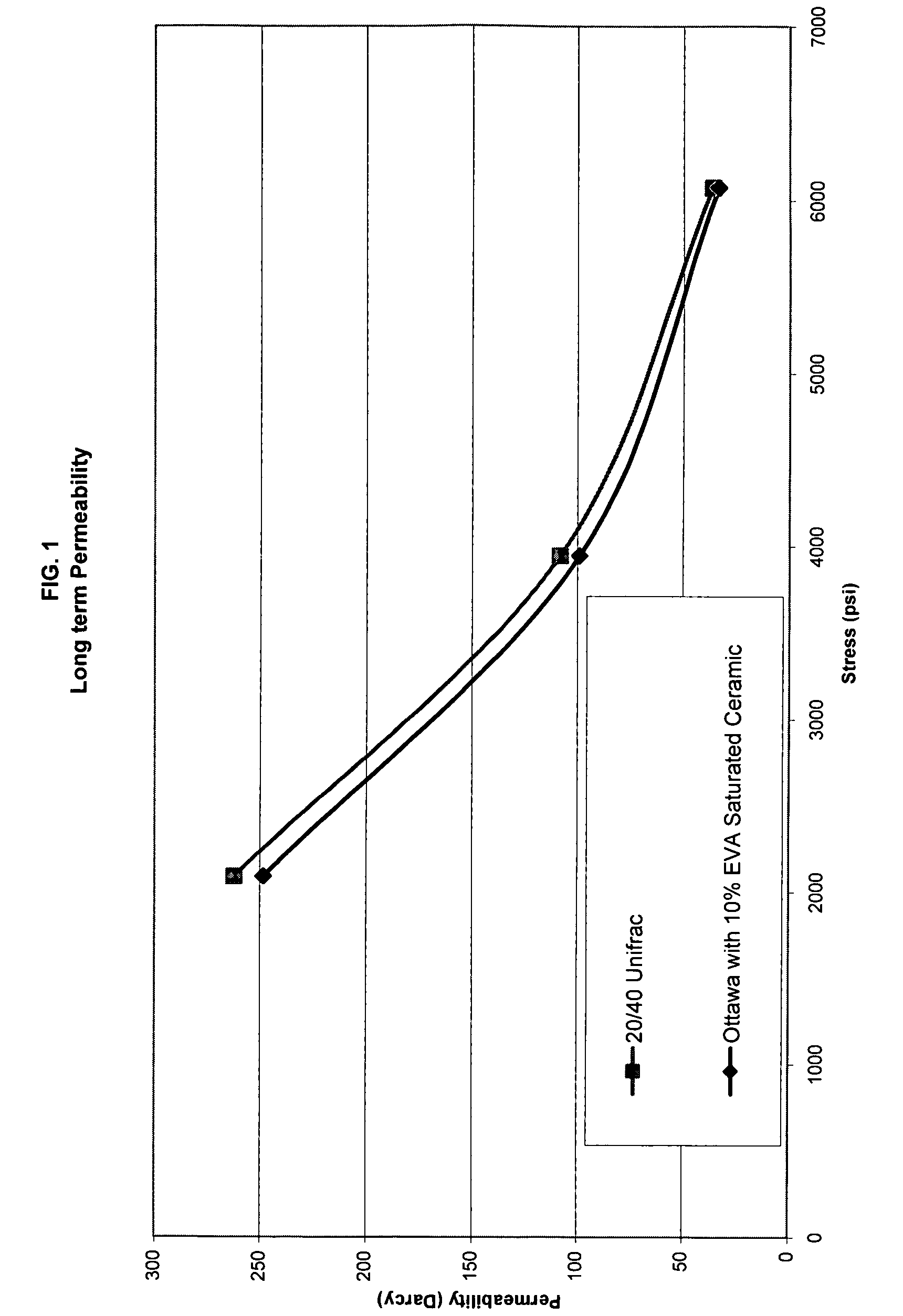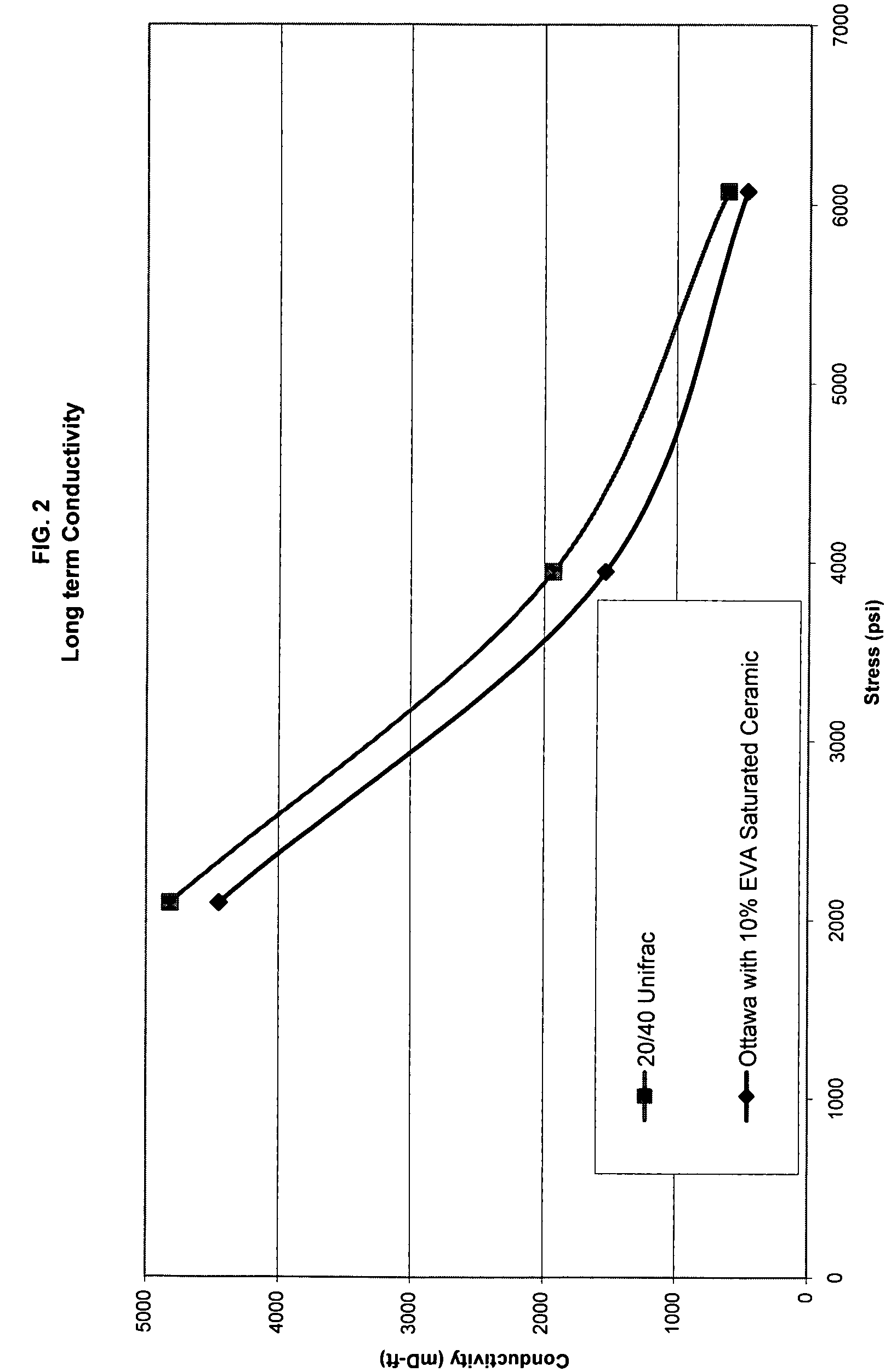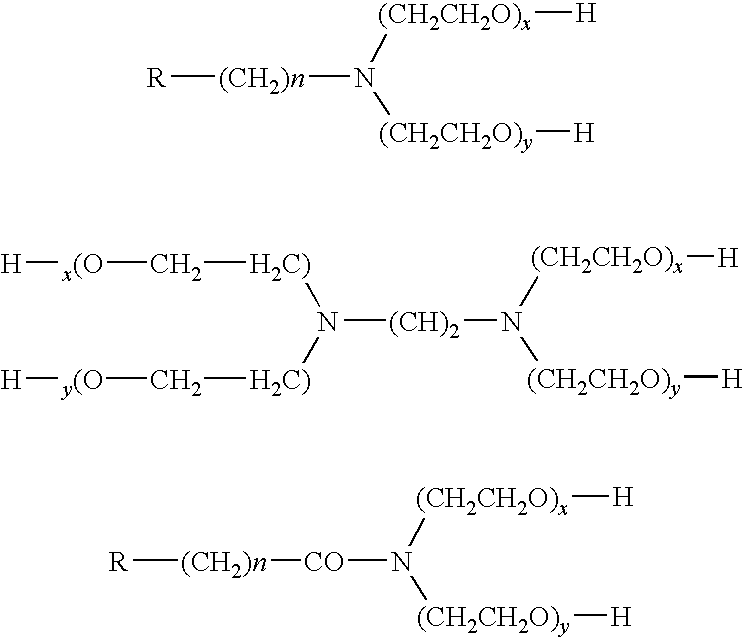Porous composites containing hydrocarbon-soluble well treatment agents and methods for using the same
a technology of hydrocarbon-soluble well treatment agent and porous composite, which is applied in the direction of sealing/packing, separation process, and borehole/well accessories, etc., can solve the problems of reducing well productivity, shortening the life of production equipment, and preventing production from stalling
- Summary
- Abstract
- Description
- Claims
- Application Information
AI Technical Summary
Benefits of technology
Problems solved by technology
Method used
Image
Examples
example 1
[0071]Porous ceramic beads impregnated with ethylene vinyl acetate copolymer were prepared by placing spherical insoluble beads of aluminosilicate having a porosity of approximately 12 volume percent and having 20 / 40 mesh into a 10 weight percent solution of ethylene vinyl acetate copolymer in xylene blend. The beads were allowed to soak up the ethylene vinyl acetate. The beads were then placed onto a wire mesh drying bed and the liquid was then passed through the wire mesh and recovered for reuse. After removal of the excess copolymer, the ceramic particles were then dried in an oven at a temperature of about 100° C. The particles were then passed through a wire sieve of about 16 mesh.
[0072]The impregnated porous beads were then added to Ottawa sand rendering a 90 weight percent Ottawa sand admixture which was then introduced into a column. The column was then saturated with sea water brine.
[0073]An oil having a 4.4° C. pour point, ASTM D-97, was then placed on top of the column an...
example 2
[0074]Using approximately 63 grams of proppant having a proppant width pack of 0.231 inches, conductivity tests were performed according to API RP 61 (1st Revision, Oct. 1, 1989) but using an API conductivity cell with Ohio sandstone wafer side inserts to simulate the producing formation. The test proppant was placed between the sealed sandstone wafers. The test proppant was a 20 / 40 Ottawa sand, commercially available as 20 / 40 Unifrac from Unimin Corporation and the porous impregnated composites of Example 1.
[0075]The conductivity cell was then placed on a press while stress was applied at 100 psi / minute until the target temperature was reached. Fluid was then allowed to flow through the test pack maintaining Darcy flow. The differential pressure was measured across 5 inches of the pack using a “ROSEMOUNT” differential pressure transducer (#3051C). Flow was measured using Micromotion mass flow meters and data points were recorded every 2 minutes for 50 hours. An Isco 260D programmab...
PUM
| Property | Measurement | Unit |
|---|---|---|
| porosity | aaaaa | aaaaa |
| particle size | aaaaa | aaaaa |
| particle size | aaaaa | aaaaa |
Abstract
Description
Claims
Application Information
 Login to View More
Login to View More - R&D
- Intellectual Property
- Life Sciences
- Materials
- Tech Scout
- Unparalleled Data Quality
- Higher Quality Content
- 60% Fewer Hallucinations
Browse by: Latest US Patents, China's latest patents, Technical Efficacy Thesaurus, Application Domain, Technology Topic, Popular Technical Reports.
© 2025 PatSnap. All rights reserved.Legal|Privacy policy|Modern Slavery Act Transparency Statement|Sitemap|About US| Contact US: help@patsnap.com



